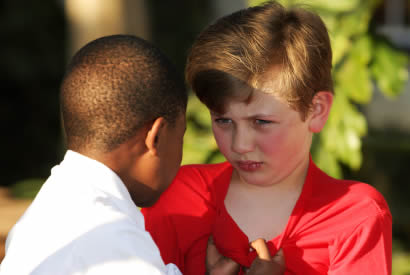
ᔥ istock photo
High levels of drinking have repeatedly been shown to predict divorce. The most cited explanation for this is that excessive alcohol use disrupts daily tasks and functioning, and increases spousal conflicts. A study of the effects of drinking among husbands versus wives, and of similar versus dissimilar drinking in couples, has found that both level of drinking and compatibility in drinking can have an influence on divorce.
Results will be published in the May 2013 issue of Alcoholism: Clinical & Experimental Research and are currently available at Early View.
“On average, divorced people drink more than married people,” said Fartein Ask Torvik, a researcher at the Norwegian Institute of Public Health as well as corresponding author for the study. “To some extent, this is due to increased drinking after a divorce, but people who drink heavily also have a higher risk of experiencing a divorce, so heavy drinking likely interferes fundamentally with the quality of marriage.”
“Heavy alcohol consumption is a problem of great public health concern in most Western societies,” added Ellinor F. Major, director of the division of mental health at the Norwegian Institute of Public Health. “It often leads to dysfunctional marriages and divorces. The present study adds to our understanding of the predictive value of alcohol use, and particularly of discordant alcohol consumption for marital dissolution.”
Torvik and his colleagues used data from a previous health study, in which all inhabitants in a Norwegian county were invited to participate in a health study between 1984 and 1986: 19,977 married couples partook. All participants provided information on alcohol use and mental distress. Cox regression (“time-to-event” analysis) was used to study the risk for divorce during the next 15 years, using demographics and mental distress as covariates. “There was one earlier study of this issue,” said Torvik, “but we had a larger sample and a longer follow-up period.”
“Essentially, the more people drink, the higher is the risk of divorce,” said Torvik. “In addition, the risk of divorce is lowered if the spouses drink approximately the same amount of alcohol. This is not only true for those who drink excessively – there is also a reduced risk of divorce if both spouses abstain totally from alcohol. Also, we found heavy drinking among women to be more strongly associated with divorce than heavy drinking among men.”
“This latter finding is of major interest,” said Major. “For instance, the risk of divorce is estimated to be tripled when the husband’s level drinking is low and the wife’s drinking is heavy, compared with couples where both drink lightly.”
“There are several possible explanations for this,” said Torvik. “One of them is that women in general seem to be more strongly affected by heavy drinking than men are. Thus, heavy-drinking women may be more impaired than heavy-drinking men. It is, however, important to note that heavy drinking is much less common among women than among men.”
“Heavy drinking among women is also less acceptable than among men in our society,” said Major. “A wife’s heavy drinking probably also interferes more with general family life – that is, the caring role of the mother, upbringing of children, etc. Perhaps the husband is more apt to the leave the spouse than is the wife when major problems occur. These factors may account for the higher risk for marital dissolution when the wife is a heavy drinker than when the husband is a heavy drinker.”
“Research on alcohol use and relationships should always include data from both spouses,” said Torvik. “The interaction between the spouses is too important to ignore. Likewise, clinicians working with this population should be interested in the alcohol use of the spouse.”
“Couples who intend to marry should be aware of the drinking pattern of their partner since it may become a problem in the future,” added Major. “Someone with a light or moderate alcohol use, who has a spouse who drinks heavily, should encourage that spouse to change their drinking pattern into light or moderate level if the main concern is a lasting marriage of good quality. Good advice probably would be to encourage a similar pattern of moderate or light drinking in both spouses.”
“Furthermore, while our results indicate that compatibility in drinking is important with regard to divorce, a couple with two heavy drinkers still has a higher divorce risk than couples consisting of light drinkers,” noted Torvik. “I would also like to add that we have only been looking into divorce – alcohol may lead to other social or health problems.”
“Most couples in the present study have children,” said Major. “It would be of interest to study the benefits and disadvantages for the children if parents choose to stay or leave a marriage because of discordant or concordant heavy drinking. From the children’s point of view, parental divorce brings a lot of suffering, but nonetheless, marriage dissolution might be preferable for some children rather than parents staying in a marriage with poor quality.”
ᔥ
Alcoholism: Clinical & Experimental Research (ACER) is the official journal of the Research Society on Alcoholism and the International Society for Biomedical Research on Alcoholism. Co-authors of the ACER paper, “Discordant and Concordant Alcohol Use in Spouses as Predictors of Marital Dissolution in the General Population: Results from the Hunt Study,” were: Kristin Gustavson, Mariann Idstad, and Kristian Tambs of the Division of Mental Health at the Norwegian Institute of Public Health; and Espen Røysamb of the Division of Mental Health at the Norwegian Institute of Public Health, and the Department of Psychology at the University of Oslo. The study was funded by the Research Council of Norway. This release is supported by the Addiction Technology Transfer Center Network at http://www.ATTCnetwork.org.




